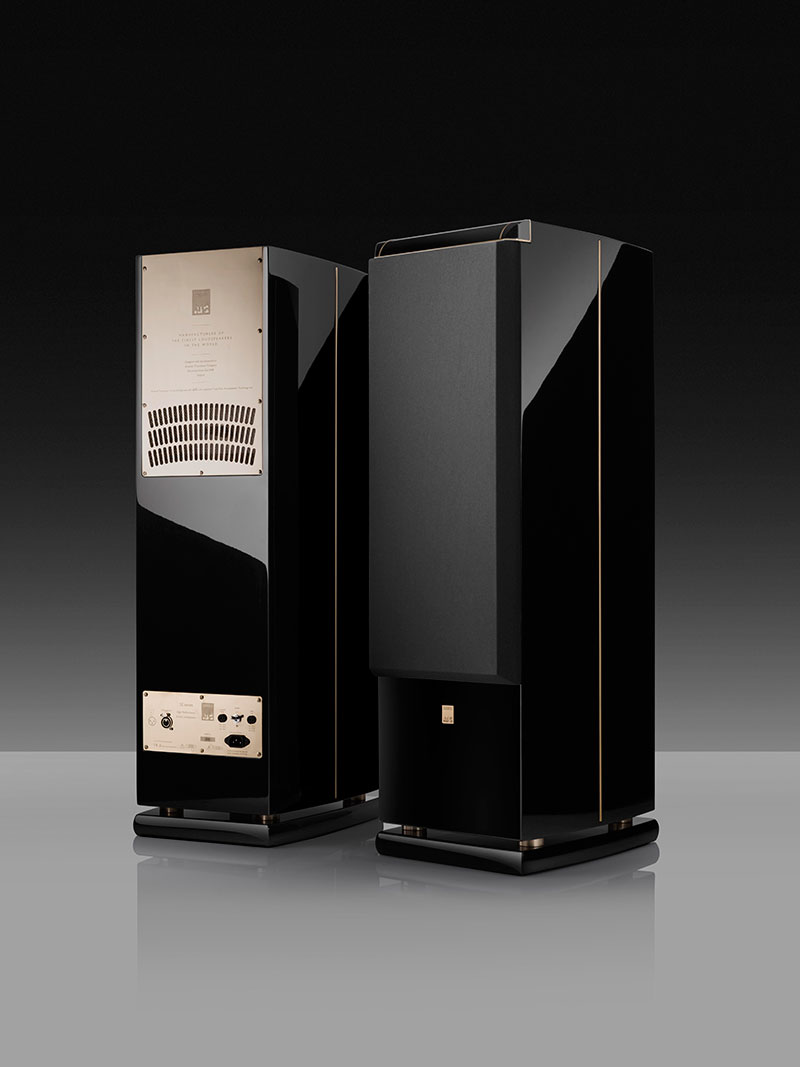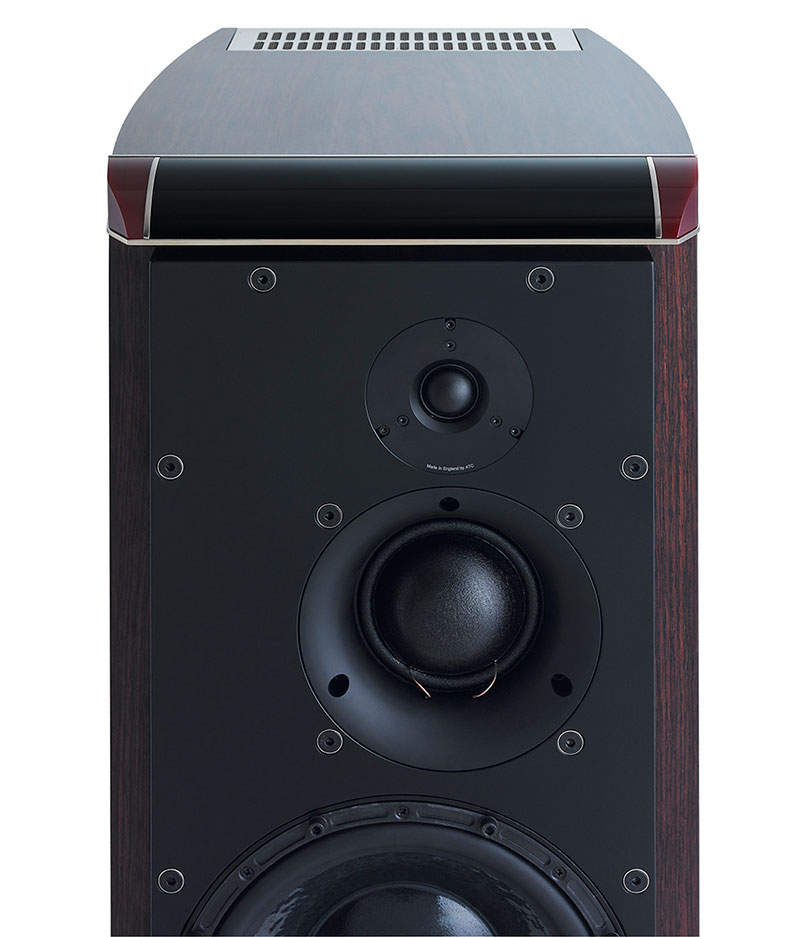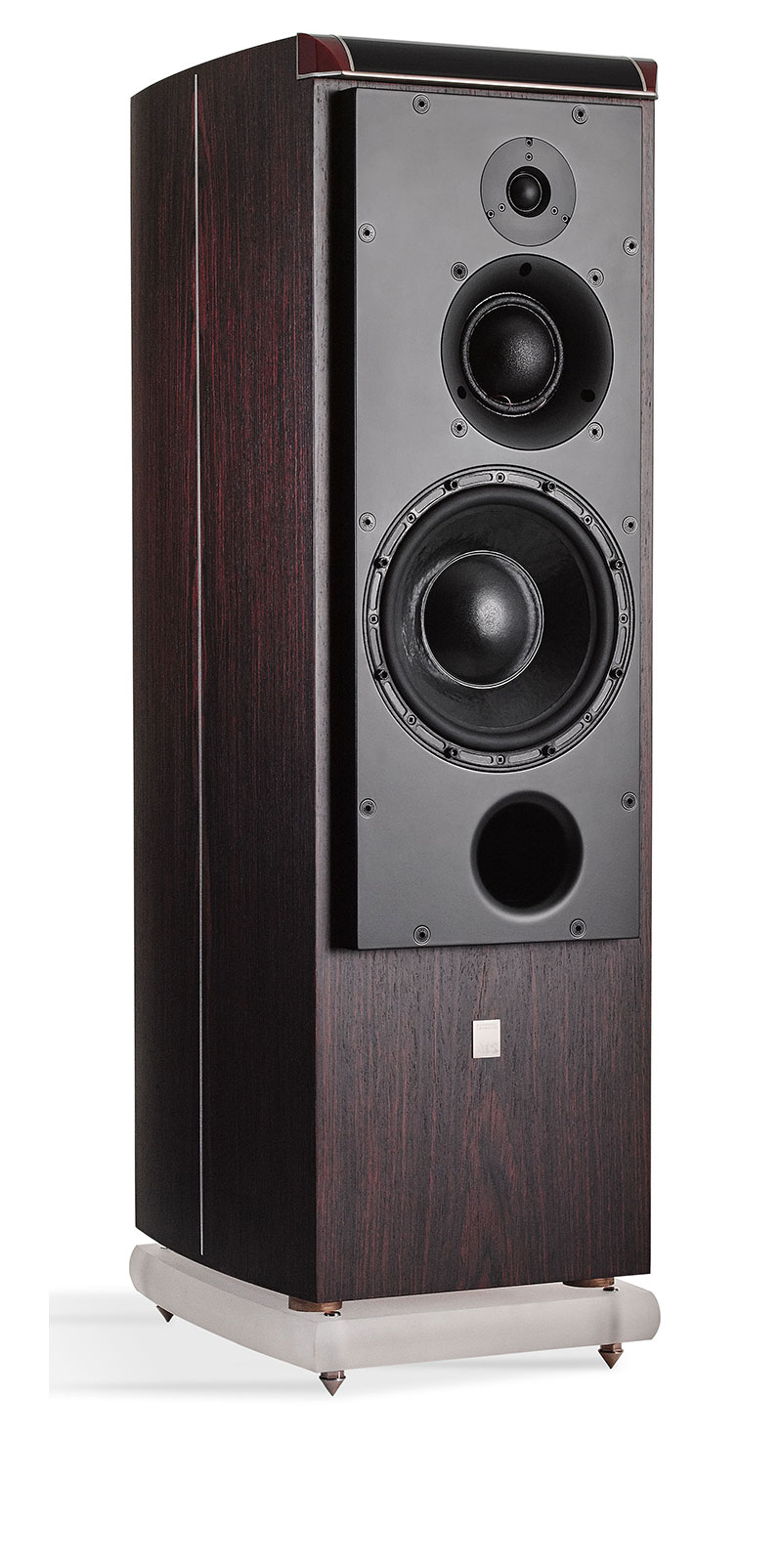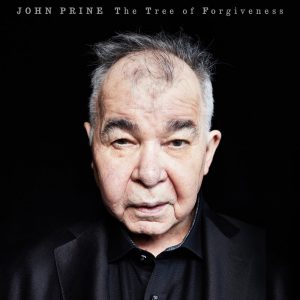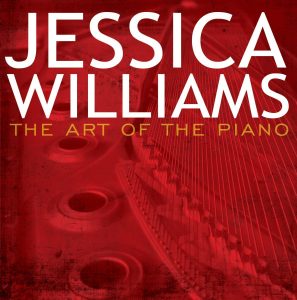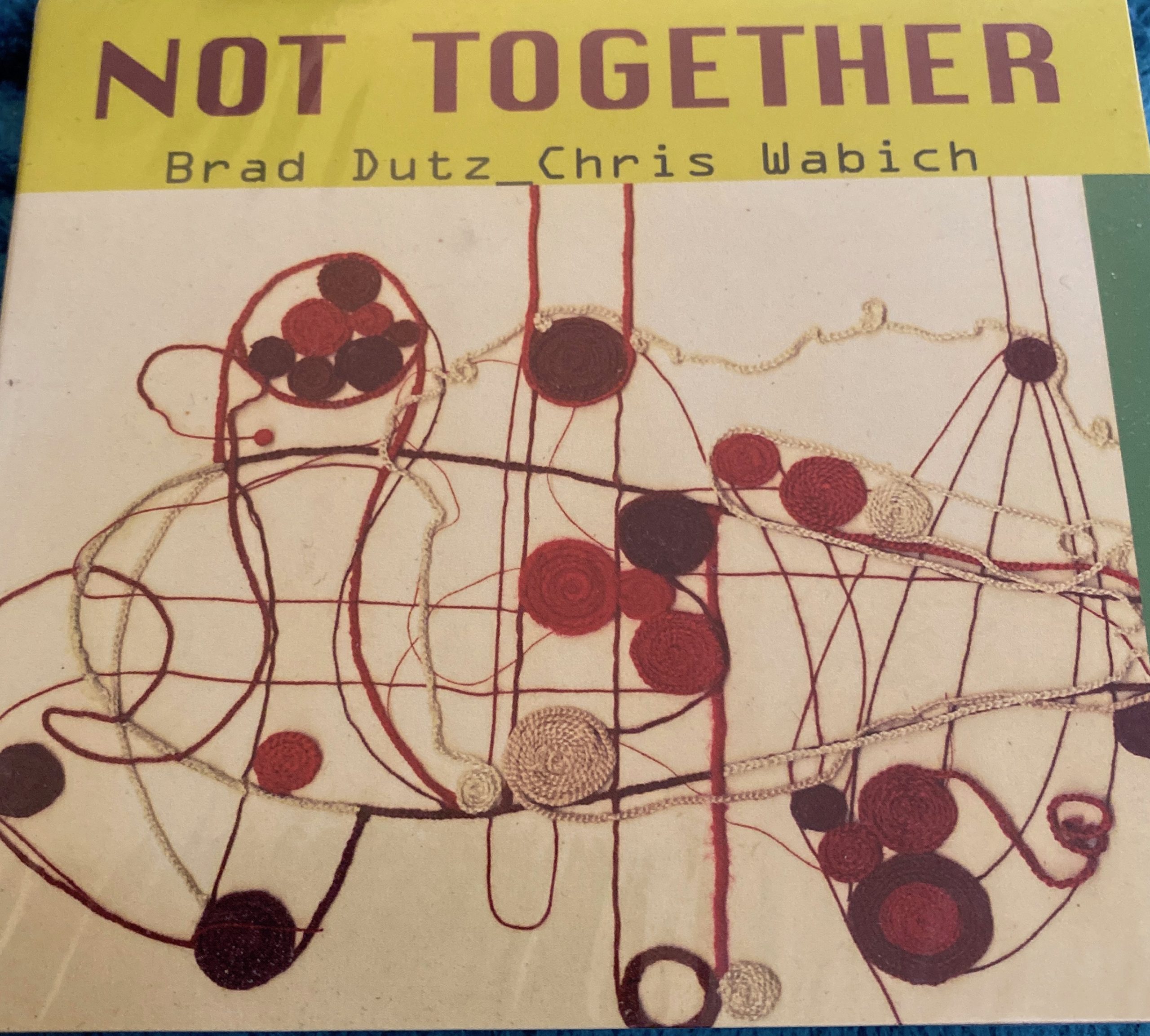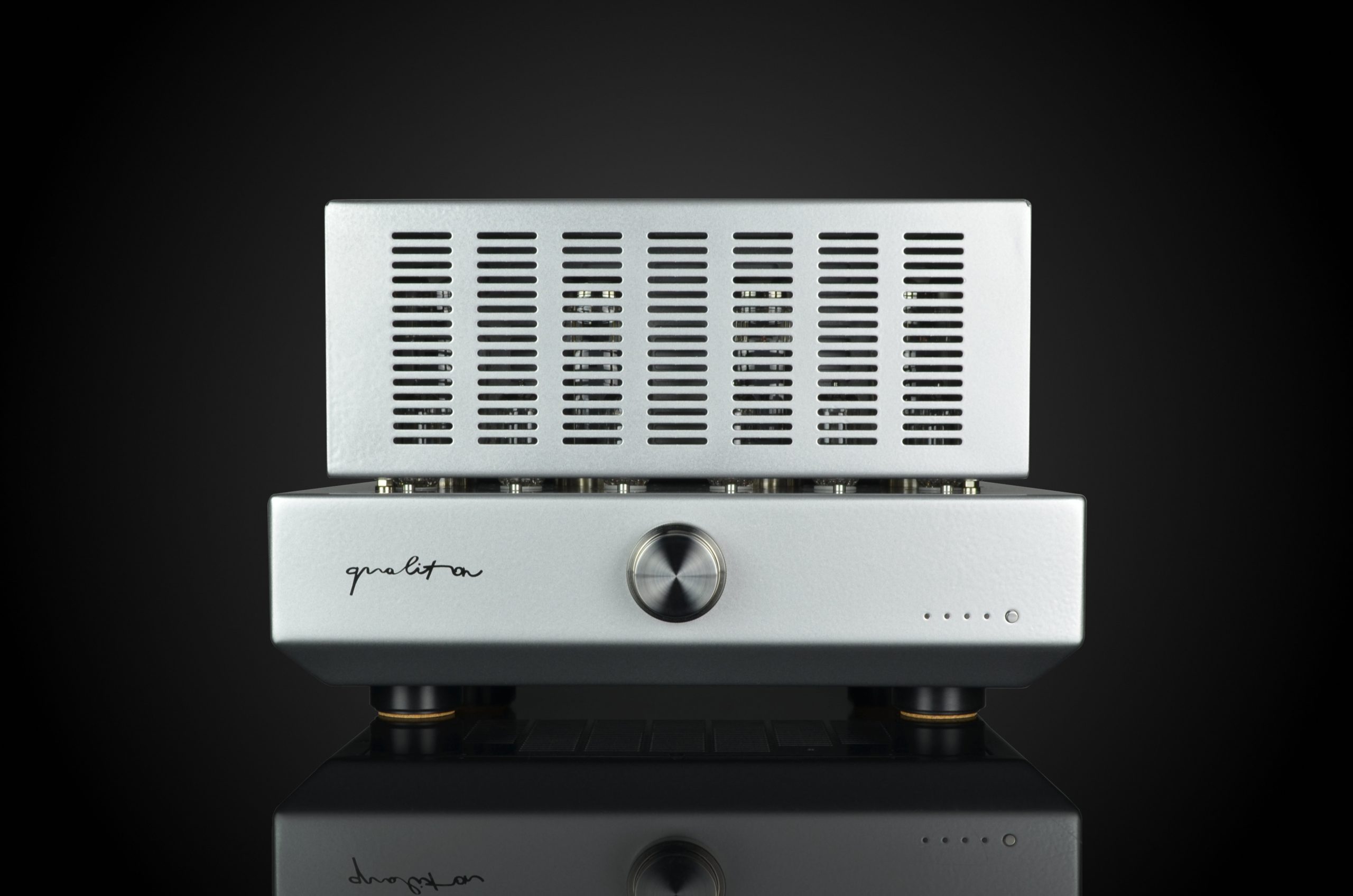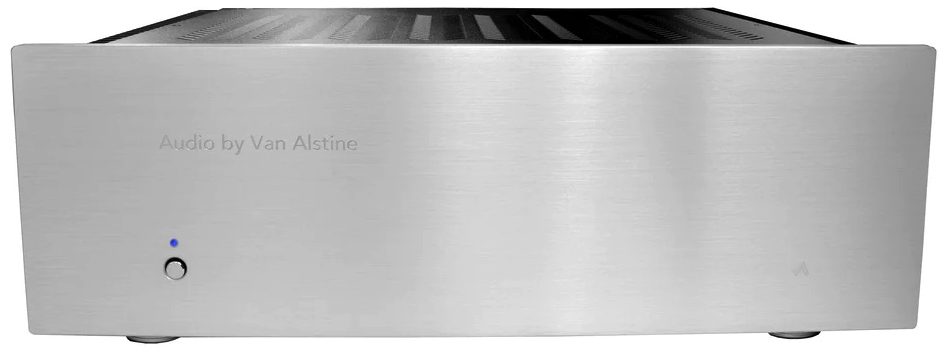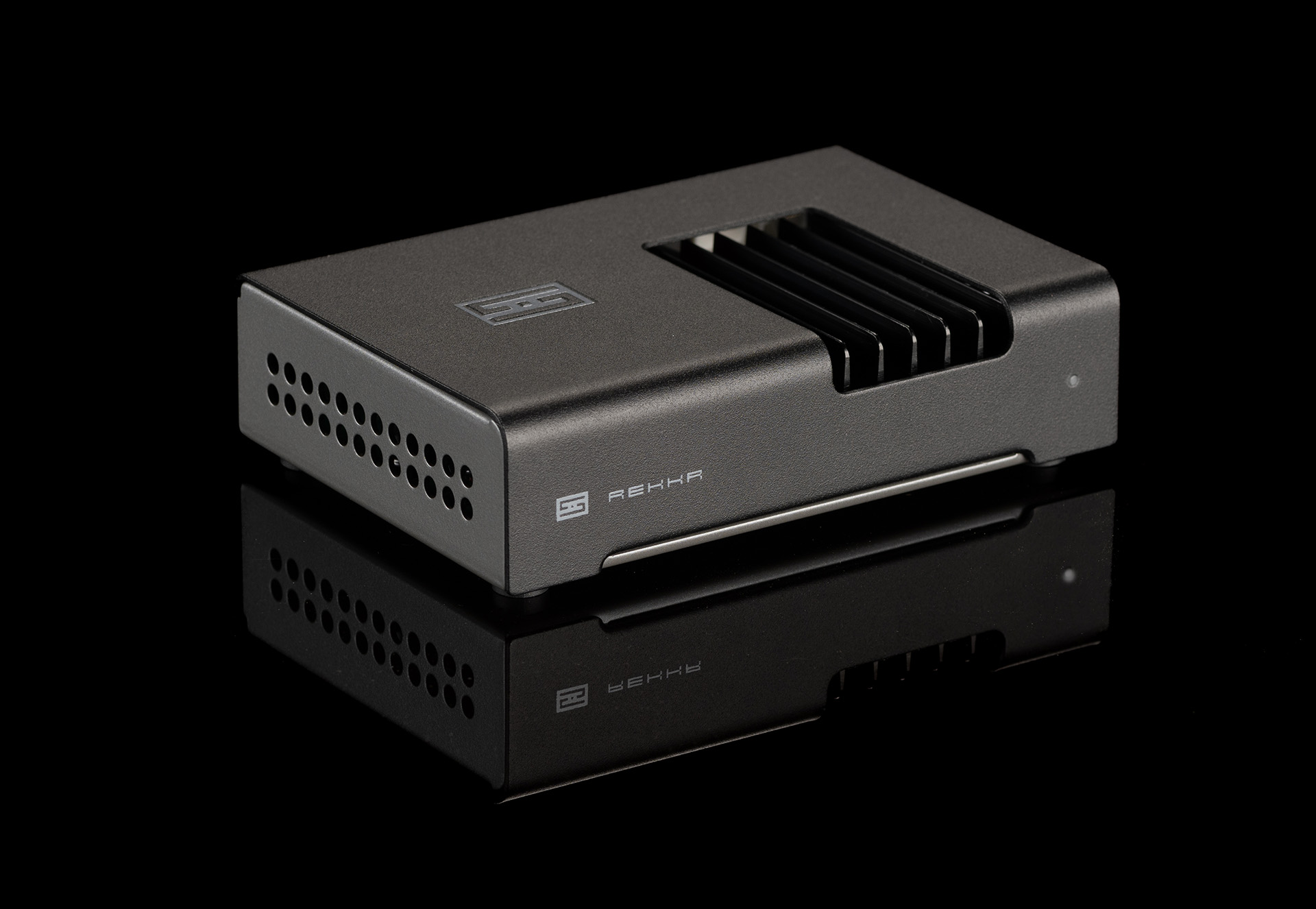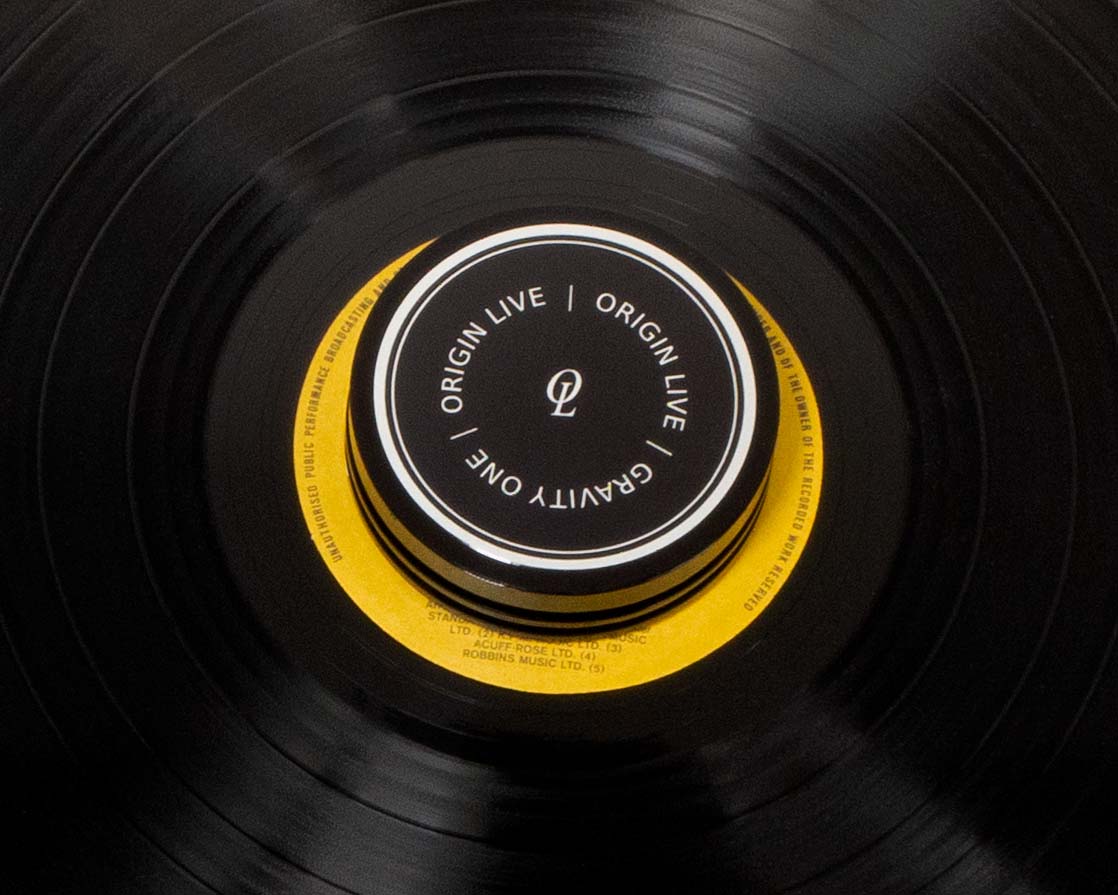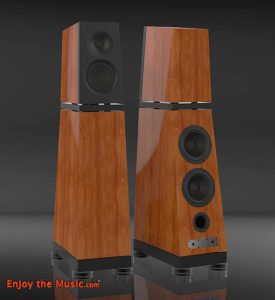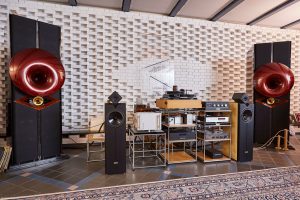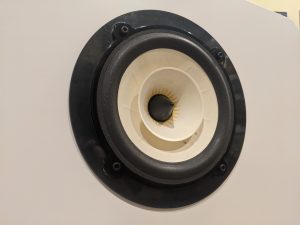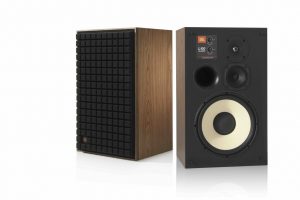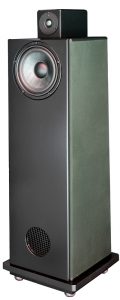I enjoyed hearing ATC's 40A (then $12,999) speaker four years ago; enough so I was tempted to buy them (see HERE for the review). They had a fuller range than my reference, and the sound was a bit sweeter.
However, my reference ATCs employ an "SL" (super linear) driver for midrange and lower frequencies, as all of its "classic series" speakers do, whereas the 40A from their entry series do not. The SL technology, as I understand it, addresses problems inherent in steel's magnetic non-linearity. I found my speakers were a bit more incisive and revealing, and had become accustomed to it. I'd anticipated a time when I could save up for powered 50s, the model above mine in ATC's "classic" line. Additionally, and perhaps more importantly, I had too many family issues on my plate to decide what I really wanted, so I took a pass.
When I recently heard ATC had a new powered 50 speaker available, I was interested and tempted. The price gap between the 40s and 50s is almost double, thus it would take a bit of serendipity to afford the 50s, but...who knows?
I've championed ATC speakers for quite a while. Their timbre / tone delivery is very good, but there are competitors in that realm. There aren't, however, many speakers that deliver good tone and timbre with exceptional dynamics. In my estimation, you have to look at horn speakers for superior dynamics. With a horn speaker however, you're often stuck with a shouty, lean quality and that undermines my first priority. Of course there are exceptions, just not many and they are priced as exceptional items. Lastly, nearly every ATC speaker gets sound down to about 40Hz despite the measurements ATC supplies with their speakers. These qualities allows me to forget I'm listening to a speaker / stereo, even if I don't often find myself fooled into thinking I'm hearing live musicians.
Chances are you have many recordings that used ATC speakers in the recording chain. Yeah, so what you might say. There are a lot of poor recordings, so that doesn't mean much. Well, many of those recordings with which ATC are associated are exemplars of audiophile quality sound. A small sampling of artists and engineers who use them include: Mark Knopfler, Pink Floyd, Martina McBride and Diana Krall, George Massenburg, T-Bone Burnett, and Bob Ludwig. A more comprehensive, and surprisingly, long list is available at ATC's website.
Despite an astonishing amount of success since their creation in 1974, ATC are a modest company. ATC's naming conventions extend that understated character. Rather than names like Amazing Precision Dream Makers, ATC designates speakers by their internal volume: SCM19 (studio control monitor, with 19 cubic liters). Add an "A" to a speaker, and that designates it is amplified, i.e. the amplifiers with correct power for each drive unit, active crossovers, and phase relationships between the drivers is included. Add a "T" and it's a tower, not a stand mount speaker.
ATC aims for matching timbre amongst its speakers, from entry level to their top of the line. I've listened extensively to, or owned their SCM7, 10, 20, 35, 50 and 100s—some powered, some not. ATC crosses the goal line with timbre matching, without an evident sound coloration. ATC speakers will let you know, rather clearly, what's going on upstream in your system. If you don't like the sound you have, you can address the issue in your other components, or if an upstream component is a holy relic to you... your quandary will be keeping the relic, or ATC. If you opt for an ATC speaker choosing from amongst their models is a fairly simple calculus: buy as large an ATC as your room and budget allow. They will all speak with a remarkably similar voice.
I had SCM 100 ASLT speakers in my house for a mere three days in 2008, but eleven years on it remains a landmark experience. The 100s are large in width and depth (834 x 400 x 585mm) and thus somewhat imposing. My wife was appalled by their size. Upon first seeing them she remarked, "They're (visually) horrible." By the weekend's close, she was so seduced by them she asked if we could afford them. I wished.
Today, I write about ATC's SCM50SE speakers. Here the appellation "SE" stands for "special edition," though absent the "T" moniker, they are tower speakers. The appellation "SE" is practically raucous hijinks for ATC. "Special Edition" here is a mix of a beautification process and upgrades in components, coming with a price tag that is memorable too, $65,999! Yikes. On the beautification side, my sample was gloss piano black; I'm not a fan of gloss finishes, but this finish was a viewing pleasure. ATC specifies that any veneer is available with a choice of three top "brows" or "fillet" edge.
The 50SE are active speakers, here again that means the amplification, electronic crossovers, and phase alignment are built in. Almost unicorn like, ATC design and build all their own drivers and amplification, thus each driver has its bespoke amplification. Their "regular" active speakers feature an amplifier pack (with active crossover included) that integrates onto the back of the same cabinet used for its passive speakers, creating a protrusion at the rear of their rectangular shape. The 50SEs completely discrete class A/B amplifier module is accommodated into the shape of the speaker, making for an elegant and sleek outline.
Each driver is fitted with its own amplifier, here 200, 100, and 50 watts to drive the 9" woofer, 3" dome midrange, and 1" tweeter. Crossovers are active and feature 2nd order Butterworth filters. Each crossover point also features an all-pass filter.
ATC say of their crossovers, "The all-pass filters have a flat magnitude response but a variable phase response, and their implementation allows the system to be setup to have far better phase coherency through the crossover regions, improving tonal balance and producing a wider more three dimensional stereo image. The all-pass filters are one advantage of an active loudspeaker, and they can't be implemented in passive form."
Continuing, they say, "The amp pack employed in the SCM50Se differs from that in the lower level products in that it does not use any IC op-amps within the circuit design. All the op-amps are discrete transistor types of ATC's own design, and use 22 devices per stage. The discrete implementation results in the lowest possible noise and distortion, and far greater resolution for the listener. This discrete version of our 'Amp Pack' also features a separate power transformer for the line level stages and additional voltage smoothing and regulation."
Each mosfet amplifier operates in class A/B. Previous designs ran 1/3 of their output in class A, making them run slightly more than warm, though well shy of hot. So, you might be thinking that building an amplifier inside a wooden box sounds like a bad idea, especially for a warm running amplifier in a beautiful lacquered, wooden box. ATC employs effective chimneys on the back side and on top, as pictured below. The amps do indeed produce warmth, but never so much that I could not leave my hand on the speaker as long as I liked, including after listening sessions that lasted several hours.
This is a premium product with an accompanying price, so buyers might wonder, what's all that heat going to do to the metal inlay on the chimneys over time? ATC finishes the visible metal parts using a "Physical Vapor Deposition" process. ATC says that the PVD process is also used on jewelry and cutter tool tips, producing a very hard finish, which suggests ATCs metal parts should have a long life while looking good. ATC also says the PVD treatment provides the stainless steel components a dull nickel appearance, but I would be more generous and say it's somewhere closer to a satin finish. Dull nickel does the finish no service, it's lovely.
Visually, the tower shape of the 'SE' features, per ATC, "subtly curved side panels, metal inlay details, and a level of finish which is a huge step up from the 'Classic' and 'Tower' Series beneath it. The cabinet is constructed using a multi-layer lamination system, which results in far greater stiffness and damping than a cabinet constructed using conventional panels. The increase in stiffness pushes cabinet resonances up where they are only minimally excited by the bass and mid drivers, and the increase in damping helps to suppress cabinet coloration even further."
The ATC 50SE Loudspeakers shown in wood.
The cabinet is a sight befitting the price. This time a large ATC speaker drew an "oooooh, they're beautiful" from my wife. The piano black matched wonderfully with our matte black furniture. Whereas the ATC 100s announced themselves, the 50s sat nobly, beautifully and unfortunately right at home in my room. The only trepidation I had about the speakers was having a gloss piano black speaker in a house with 13 year olds making a ruckus.
My listening room is large. I'll say that at a minimum its 5700 cubic feet. One end of the room starts at eight feet, rising uninterrupted to 14 feet. The floor space of the room proper is 20 x 26, but it opens, without walls on one side into another space that's ten inches higher and about 15 feet by 10 feet rising to 14 feet which then opens into another space that's about 8 feet by about 15 feet but "only" 8 feet tall. That's a lot of space to fill.
I also had on hand ATC's CDA2 Mkll for only a portion of the time I spent with the 50SE speakers. This combo-meister features a fully balanced, two channel preamplifier, CD Player, and DAC. At about $4249, it's easier to see this as an affordable and distinctly high value combination. I will offer only passing comments on it. The preamplifier section of the CDA2 Mkll is very good, and excelled here only by the less ambitious and almost thirty percent more expensive Pass Labs XP12 ($5800) which performs no digital duties and thus is a far less of a bargain. Both are excellent, but my preference here was for the Pass.
The CDA2 Mkll was slightly less sweet sounding than the XP12, with a slightly less developed or saturated tone and timbre. In my room, which has some slap echo that needs taming, the CDA2's slightly leaner presentation exacerbated the echo. I preferred the Oppo BD105 through the CDA2 as a preamp or the CDA2 as a source through the XP12, with this last combination being my overall preference. In a different room, I think the CDA2's more explicit presentation would have shamed the Oppo. Whereas ATCs SCA2 preamplifier is a marvel of precision and speed, it is also demanding of its ancillaries. The CDA2 is a gentler dance partner than the SCA2 preamp. There are right systems (and rooms for that matter) for these, and I chose the Pass Labs XP12 and the Oppo for my initial listening sessions and then the CDA2 through the XP12 while it was on hand.
Sound
I write caught between two competing interests. Be clear. Be detailed. Reflecting upon my nearly twenty years writing reviews, I seem to have thought more words are better. More words, I've thought, show thoughtfulness (it can), careful consideration, and greater clarity. Also, somewhat irrationally, I thought it also showed more appreciation. I'm aware that's a fallacious assumption, having noticed it...I'll be briefer. I preface my words with that note because I am going to write less to be clearer.
ATC's 50SE, combined with Pass Labs' XP12 and the CDA2 Mkll is the best sound I've had in my listening room, ever. They danced beautifully, powerfully, and gracefully. The CDA2 as a CD player and DACand preamplifier source, was more detailed and just a bit too clean for me, which played less well with my somewhat reverberant room, but it was a close second.
If the ATC 50SE isn't ATC's crowning jewel, it's because ATC make 100SE and 150SE speakers. The larger speakers are no doubt more authoritative. However, in my rather large listening room the 50SEs lacked for nothing. It was as though the speaker was built for that room.
I found I lost essentially nothing in the bottom end when disconnecting my two subwoofers. I tend to listen loud (not stadium rock loud), rather than at low volumes. There are, in my experience, natural volumes for various recordings and genres. No volume was off limit due to the recording or genre or playback compression. A jewel in ATC's crown is their ability to play loud without clipping, sounding compressed, or losing music's natural qualities. Every genre I thought to pull out performed amazingly well.
Touch and tone (combined for timbre, in my mind) were spectacular. John Prine's Tree of Forgiveness was wonderful. Whether at a reduced bit-rate through YouTube, or on CD, the intimacy of his style and soul were easily and beautifully conveyed, where beautiful doesn't refer to his gravelly voice so much as the content of his communication, and the speakers' ability to convey that. The human miles the man has traveled and experienced were abundantly clear in my listening room. Understated emotion were there in spades, but not over the top. I heard the loneliness and his appreciation of simple pleasures in "Knockin' on Your Screen Door." ("I need some help with this can of pork and beans"). Listening to that album was like sitting on a bench in a quiet time under a tree (sorry) with an opportunity to relive another's events. I've never been a John Prine fan before, but found the ATC's way with the album just a relaxing pleasure.
While loud is within the domain of these speakers, I loved hearing the quiet, intimate, light touches of acoustic music. Their capacity to resolve with a light touch, rather than with CHOKING CONTROL, had me poking through songs I loved for their emotional qualities. Here, my listening was not for how well the system captured sound, so much as treating each song as a gentle push out onto a quiet, misty lake with no rush to get "to it" but to float out into discovery.
I pulled out my copy of Jessica Williams, The Art of The Piano to hear "Esperanza" while my nephew was visiting. We were gobsmacked by the realism, something he's not particularly interested in. He tried tickling out some of the phrases from "Esperanza" on the piano in the same room as the speakers to hear how close it got. While the recording venue, piano size, and the fluidity of playing differed, the piano-ness of the recording was remarkably present through the CD. The mix of hammer, strings, and soundboard delivered the hard to describe weight that a real piano provides, while also gently presenting the touch Ms. Williams has in abundance. I suppose I'm partially responsible for the sense that ATC speakers have to be played loud to sound good. This recording proves that a lie.
I loved the balance of this speaker. Timbre and tone were spot on with the Pass Labs XP12, a wonderful partnership where a solid state preamp and amp (in the ATCs) was richly hued, liquid, and extended. While not a juicy, tubey sound, the 50SE/Pass Labs XP12/Oppo 105 mix rendered tone colors that were rich, varied in intensity as well as in lightness and darkness. The fine grain of detail was as real as I've experienced. The corporeal quality Sam Tellig dubbed "palpability" is better with tubes than, perhaps with the Pass, but images were gently and clearly placed in three dimensions with good front to back dispersion, no matter the sound pressure level. Pairing my subwoofers with the 50SEs allowed for a wee bit more relaxation, and perhaps a bit more dimensionality, but it required close listening to even speculate.
I loved putting on absurd and fun songs, like Primus' "Pork Soda," Lee Roy Parnell's "Mama Screw Your Wig on Tight," Pink Martini's "Pana Cand Nu Te Iubeam." These songs, represent various iterations of play, celebration, and great angst through pace, dynamics, and protracted drama. They were each and all served with such pleasure, joy, and laughter for me that... you might be asking, do I think they were perfect? Probably not. However, as long as rooms and recordings aren't, it's impossible to pin problems on a collection of components, let alone a single one.
What I heard through an exhaustive review of my digital sources was chameleon-like. Well, more like a space traveler. Hearing the unhuman recorded mix of electronica and female vocals on Massive Attack's "Angel" was like being transported to the middle of a Doctor Who episode, with what was to me an alien sonic environment. The undiluted humanity and absurd ennui of Pink Martini's "Pana Cand Nu Te Iubeam," recorded in a studio with its mix of instruments composed of wood and strings and an unfiltered vocal, transported this listener to a far more terrestrial view. Though terrestrial in environment, but with a sound clearly from a different era and substantially larger acoustic was Lang Lang's rendering of Sergei Rachmaninov's Piano Concerto No. 3. The latter is clearly a different tapestry on which to make music than Pink Martini's that the gestalt was striking.
I use a time and space travel metaphor to communicate the clean sweep of a sonic signature from one track to another, and from one genre to another via the 50SEs. Nimble, powerful, light in touch, imbued with electronica, or whatever signature the musical creators brought to their creations. This was happening in ways I'd not heard before.
This system is not an analytical one, though it can be. Like with live music, sometimes I listen with my heart and sometimes I listen to understand the mechanics, i.e. analytically, how composers create my emotional experiences. I found it easy to switch between the two, always at my whim, not because of the speakers' signature. If your idea of a great speaker is one dripping with emotion on every song—I had something like that with a Koetsu Rosewood cartridge and loved it for a long time—this is not the speaker system to create that. Turn your eyes and ears elsewhere. This system will give you what's on the record without punishing you or the song, but better recordings are reported as such. If you've heard other ATC speakers, this iteration is gentler, though I never found objection to other ATCs when well partnered—that's true of nearly every resolving bit of equipment.
These speakers ruined my appreciation for my little ATC SCM20A speakers. It also ruined my appreciation of every system I've ever had. Even with a mundane source like Oppo's BDP105, the sound was present, immediate, relaxed and yet detailed with as good a timbrel balance as I've heard in my house or at a show. I hate that the 50SEs are so expensive, not because they don't deserve their price (I'm not qualified to make that statement) but like Pandora's Box, I know what's possible... and I can't afford it. The idea of saving for these calls to mind Lottery winnings, robbery and... I'm not sure. I place little confidence or willingness on any of those. So, I won't be buying these, wish though I might.
ATC's CDA2 Mkll performs like the cliché Swiss Army knife. I had but two weeks with it before personal matters had me close the book. Online and print praise I've read aren't exaggerations of its performance and quality. But for extraordinary personal circumstances, I'd have asked for longer time to listen to the CDA2 MkII. This, too, deserves your attention. Thankfully, the CDA2 MkII will fit in more homes and budgets.
Conclusion
If the ATC 50SE aren't ATC's crowning jewel, it's because there are bigger more authoritative iterations of ATC's special edition series. I'm not going to be an apologist for the price of ATCs 50SE. Many will have a chance to hear them, only a few can own them. So it goes. These speakers were a revelation to me from the moment they were powered up. I can't weigh in on a "value proposition," that's a question for others to resolve. However, for $65,999 you get two speakers, six discrete amplifiers (three per channel) and active crossovers for each speaker. Their performance peers, also painfully expensive, require expensive outboard amplifiers and cabling to sidle up to the performance of these ATCs. If you're shopping at this end of the market, you owe it to yourself to hear them. They're very special indeed. The CDA2 MkII is special as well and worth hunting down.
ATC 50SE Loudspeakers
Retail: $65,999 a pair
ATC Loudspeakers
atcloudspeakers.co.uk
Lone Mountain Audio
7340 Smoke Ranch Road, Suite A
Las Vegas, NV 89128
By appointment only
702.307.2727
Images courtesy of ATC




